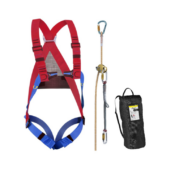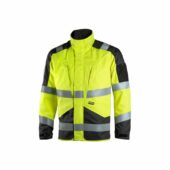Introduction:
Suppliers are critical to achieving sustainability in any supply chain. Engaging key suppliers and ensuring they understand their role in your sustainability journey is essential for success. By aligning their sustainability strategies and goals with yours, both parties can work together to meet agreed-upon standards. This guide outlines steps to select and develop sustainable suppliers, ensuring that your procurement processes support your overall sustainability objectives.
Procurement sustainability
Sustainable buying takes environmental, ethical, and social considerations into account while making decisions and ensuring long-term profitability. Our comprehensive Sustainable Procurement 101 provides the whole picture.
Understanding your organization’s goals and translating them into supplier selection, management, and performance standards is the first step to a sustainable supply chain.
Supply chain emissions account for 80%. You must start with suppliers.
Finding new sustainable suppliers
Supplier selection factors often include anticipated TCO, product quality, supplier capabilities, consistency, and supplier risk.
An more simpler strategy examines pricing, delivery, and quality. The importance of sustainability is growing.
Sustainable needs should be weighted in new sourcing evaluations.
This is your time to set expectations for a new provider. In required pre-qualification, these rules make sense. Proof is needed for requirements like:
Environmental Standards
- Does your EMS have certification?
- How are emissions, energy, trash, and water managed?
Social norms
- You follow UN Global Conduct?
- Do you follow fair trade?
- Your health and safety record?
- What is your human rights/fair pay/working conditions/diversity policy?
Governance
- Do you prohibit bribes and corruption?
- Are you compliant with industry laws?
- Have you been prosecuted or penalised for infringements?
Suppliers who match your sustainability requirements (or are willing to) will advance in the selection process.
Candidates who refuse to cooperate at the time of award shall be disqualified.
If they win a contract, their sustainability duties will be documented.
Sustainable suppliers relationship
The supplier base is crucial to sustainable success. You must inform current vendors of your sustainable goals.
Communicating expectations and providing assistance and growth can help them join your team.
Sustainability today—a starting point
How sustainable are your suppliers? Are their aims compatible with yours?
- Request their sustainability goals and metrics.
- Check their history and qualifications, such as ISO.
- How do they measure target progress?
- How well are they reaching their goals?
- Review how well their goals match yours regularly.
For the greatest results, you may need to go further into your major suppliers’ supply chain (Tier 2) and suppliers’ suppliers (Tier 3). Check their Supplier Code of Conduct to see whether it matches yours.
Sustainability benefits your suppliers
Your suppliers may wonder what they gain from adopting new processes and standards. Suppliers gain from company continuity in the case of mandated regulations.
Collaboration on innovation, research, and development boosts success and consumer happiness. Collaboration in sustainability may result in innovative goods, smarter solutions, and more efficient processes that benefit their organisation and provide them a competitive edge.
Instead of punishing, be helpful and encourage development.
Suppliers gain from sustainability tracking:
- Better energy and resource management saves money.
- Increasing brand value with investor and consumer support
- Being a top employer and improving employee engagement
- Law and regulation compliance improved
- Co-innovation and development
- Improved reputation and offering provide an edge.
Enhancing sustainability
Supplier relationship management (SRM) involves consistency and good intentions.
Both sides must agree to sustainability goals in SRM. Expectations of good purpose and success should extend beyond commercial performance to corporate responsibility.
Sustainable performance should be managed like any business, with goals and KPIs.
The goal is a collective effort to make the business more sustainable year after year by identifying important issues and documenting and implementing an improvement plan.
Sustainable performance tracking using data
Sustainability reporting requires facts and accurate information to show performance.
Environment measurements are the most accessible and established. Air, noise, power, fuel, energy, water, and waste reduction are environmental metrics.
Social metrics are underdeveloped. Measuring social responsibility accurately is difficult, but not impossible. Measure performance against human rights and social audit targets.
Carbon emissions reduction is organisations’ top environmental metric. Tracking emissions from your activities is difficult, but adding supplier emissions is extremely harder.
Fortunately, market availability and expertise to acquire credible sustainability data have increased. There are methods to define baselines, KPIs, measure progress, and report accomplishments.
Tracking and reporting sustainability requires data sharing and analysis. Sustainability and procurement executives may securely, quickly, and privately exchange strategies and KPIs with partners and stakeholders via dashboards and portals.
Reporting on environmental responsibility and other indicators gives stakeholders full visibility into your sustainable performance and growth.
Reliable sustainability reporting needs accurate data and rigorous methodology. Third-party auditors checked our solution. Discover the solution and approach.
Conclusion:
Developing sustainable supplier relationships is crucial for achieving long-term sustainability goals. By carefully selecting suppliers, setting clear expectations, and fostering ongoing collaboration, organizations can drive significant improvements in their environmental and social performance. Tracking progress with reliable data and metrics further ensures that these partnerships contribute to a more sustainable future. Begin implementing these strategies today to enhance your supply chain’s sustainability and achieve meaningful impact.

















